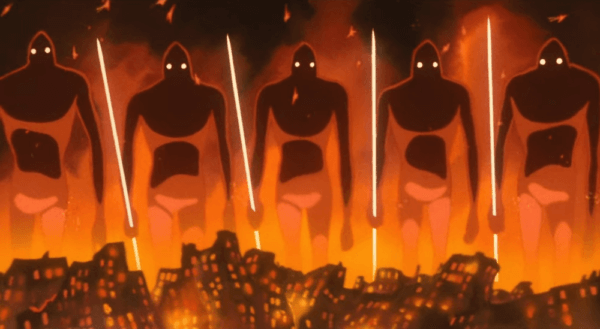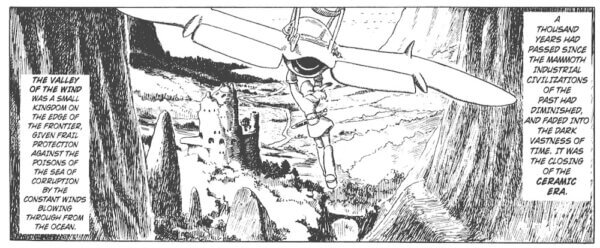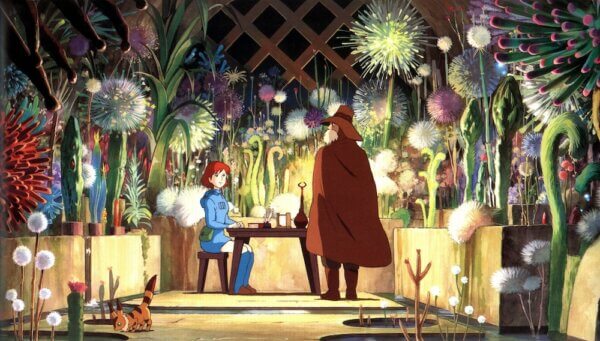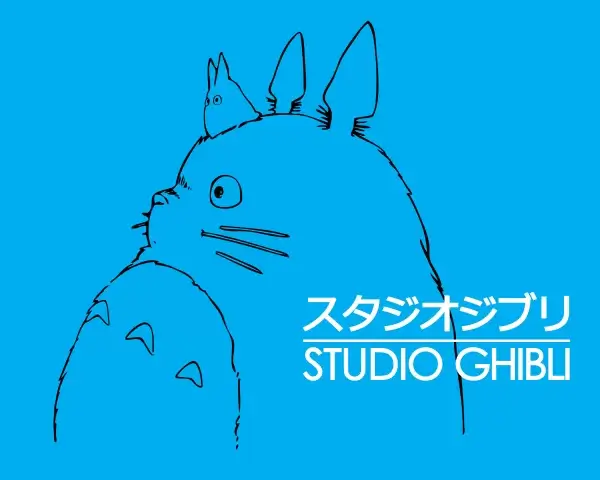Nausicää of the Valley of the Wind: The 40th Anniversary of Miyazaki’s Beautiful Post-Apocalypse Anime
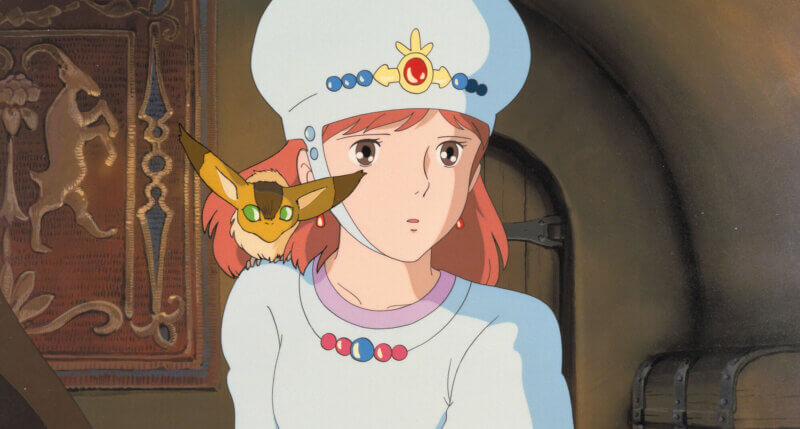
Image courtesy of GKIDS © Studio Ghibli
The Seven Days of Fire: an apocalyptic event on a global scale led by towering human-made giants as they march across cities, destroying them with fire. A truly haunting opening made more dramatic by the accompanying orchestral music by Joe Hisaishi, it also becomes equally beautiful to watch as the use of bright and dark colours gives it an almost fantastical feel that not many animated films can capture. This scene alone demonstrates the creativity and talent of Hayao Miyazaki and his team of animators, which would see them create one of the most beautiful post-apocalyptic films of all time.
Released on the 11th of March in Japanese cinemas in 1984, Nausicää of the Valley of the Wind celebrates its ruby anniversary this month, paving the way for future anime films that would follow from Miyazaki’s direction as well as leading to the creation of one of the most celebrated animation studios, winning fans over like myself all over the world. From its origins as a manga, the adaptation’s production was one of the most important for several animators and producers who joined Miyazaki, creating a series of hits as well as recognition in the industry for their talents.
Before Miyazaki would bring the pages of his manga to life, he started in the animation industry as a storyboard artist in the early sixties and even as a young adult, his talent with character designs and storytelling caught the attention of one of Japan’s most prominent animators of the time: Yasuo Otsuka (1931 to 2021). Known for his work with Toei Animation’s films The Tale of the White Serpent and Magic Boy, he mentored the young Hayao Miyazaki when he joined the studio in 1963, aiding him in his craft and passing on some of his wisdom.
But this unique mentorship would also allow Miyazaki to create new bonds with his fellow co-workers, including Isao Takahata (1935 to 2018). Working as a director for Toei Animation at the same time when Miyazaki joined the studio, Takahata also demonstrated incredible talent at a young age, assisting directors with ambitious feature films as well as directing several episodes of Wolf Boy Ken, Toei Animation’s first anime television series that debuted on television screens in 1963. Through their connections with Otsuka, Takahata invited Miyazaki to storyboard episodes of the show and their collaboration would build into a strong professional relationship within the famed studio, which saw them working together again for Takahata’s directorial debut, The Great Adventure of Horus, Prince of the Sun.
In 1969, six years after joining Toei Animation, Miyazaki started to pen his manga with the responsibility of adapting Toei Animation’s The Wonderful World of Puss in Boots and Animal Treasure Island, both of which he also worked on, to help promote the films. While these were brief gigs for the animator to help adapt the films for young readers and try something new, it was also an opportunity to explore a new medium that would see him eventually return to it over a decade later. Throughout this time, Miyazaki left Toei Animation in 1971 and worked for other studios in a new role as a director, bringing to life such productions as The Castle of Cogliostro, Future Boy Conan, and Sherlock Hound. He even reunited with Takahata, who left Toei Animation around the same time as he did, to share the director’s chair for Lupin the Third Part One.
With a mixture of critical praise and some disappointment from the Japanese box office for his early films, Miyazaki wanted to create a new manga series and work on a story of his own, away from his animation commitments. Eventually, this manga would see its first published in the pages of Animage Magazine in 1982, the oldest publication in Japan dedicated to anime (and is still printed to this day). Inspired by domestic events like The Minamata Bay disaster and literature and folktales like Dune and The Lady Who Loves Insects, Miyazaki attempted to tell something fresh and exciting that also challenged the readers to thought-provoking themes and mature character developments. This would result in his longest-running and most celebrated manga: Nausicää of the Valley of the Wind.
The story follows Princess Nausicää, who tries to prevent an environmental disaster while also trying to stop a war between two kingdoms, all while they live in a post-apocalyptic Earth where giant insects and poisonous forests scatter across vast and barren deserts. Showcasing his unique character design and passion for storytelling, the first few chapters immediately engaged with audiences and quickly grew attention, which made Animage Magazine consider taking the property into a new territory.
When his editors approached Miyazaki about the prospect of adapting his manga for an animated project, he was initially reluctant to take the early stages of his series into animation. With some time for consideration though, they all agreed that they would bring his world to life in this format, but only on the condition that Miyazaki would be the director. After discussions of whether it would be an OVA or a short film, they took the bold plunge and attempted to make it a feature-length film.
Out of all the magazine’s editors who assisted the young author when creating his manga, Toshio Suzuki supported this venture into animation and made it his responsibility to find a producer with the right experience and an impressive portfolio to back up their work. Aware of their previous collaborations with Miyazaki during their time during and after Toei Animation, Suzuki attempted to hire Isao Takahata as a producer for the film, only to be initially turned down. Not one to give up without a fight, Suzuki begged him to join the production for two weeks and eventually, Takahata made a deal with him that he would accept the position if they could find a named studio.
They reached out to Topcraft, who was known for the acclaimed anime action series Gatchaman and adaptations of global children’s books like Barbapapa (1974) and The Wizard of Oz (1982.) However, they were also recognised in the animation industry for their collaborations with the popular American studio Rankin/Bass, who did co-productions on Frosty’s Winter Wonderland, The Hobbit, and The Stingiest Man in Town. With this and their previous work with Miyazaki on Sherlock Hound, they were the right named studio to produce the film and Takahata became the film’s producer.
With a producer and a studio to back up their project, all they needed now was a dedicated team of animators. With their connections from Toei Animation, Miyazaki and Takahata could recruit some of their old colleagues. Among them was Michiyo Yasuda (1939 to 2016), who was hired for her extraordinary talents with colours, having been the key person responsible for the colour selection used for Future Boy Conan. Being in charge of the colour for this new production, Yasuda used 263 distinct shades, more than most other animated productions in Japan at the time.
The animators were paid for each frame they drew to receive fair and substantial wages for their work and contributions. This initiative and advertisements printed in Animage Magazine in 1983 attracted several young and upcoming animators to join and help the production, which was getting behind schedule due to the demanding work that resulted in storyboards and animation sheets being slowly produced. Among them was Hideaki Anno, who walked into the studio and handed Miyazaki his work and was not also hired on the spot with his impressive portfolio, but would work on the infamous resurrected giant scene, which took him approximately three months to complete the ninety-second piece of animation.
With the new animators onboard and the talented individuals in charge of the production, Miyazaki and Takahata were able to successfully complete the production within its schedule and Nausicää of the Valley of the Wind was finally released on the 11th March of 1984 at Japanese cinemas, earning 1.48 billion yen at it’s domestic box office and received plenty of critical praise. Its success and the hard work of those dedicated to this ambitious and beautiful sci-fi film would usher in the birth of two brand new studios following the bankruptcy of Topcraft in 1985, one of which would become infamous with anime forever.
One-half of the animation team that made up Topcraft would form Pacific Animation Corporation and were in charge of producing the original Thundercats series, Silverhawkes, and The Real Adventures of Johnny Quest before they were bought by Walt Disney Animation. As for the other half of the former Topcraft team, they were led by Miyazaki, Takahata, and Suzuki, and established one of Japan’s most iconic and globally-recognised animation companies to have ever existed: Studio Ghibli. With such success at creating a unique animated feature such as Nausicää with a team mostly made up of collaborators from Miyazaki’s past projects like Yasuda, they produced and released the studio’s first feature film, Castle in the Sky, in 1986. What followed would be an impressive portfolio that cemented them ever since, with My Neighbour Totoro, Kiki’s Delivery Service, Princess Mononoke, Spirited Away, and the Academy-Award-winning The Boy and the Heron making up just some of their large list of successes. Miyazaki was even able to finally finish penning the manga during Studio Ghibli’s early years, releasing the final chapter for publication in 1994 and competing his beloved story.
Having worked so hard to bring the haunting details of the deceased giant returning from the grave to cause chaos, this would make an impact on the young Hideaki Anno as he would eventually be responsible for creating Neon Genesis Evangelion, one of the most popular science fiction animated shows to come out of Japan, taking the mecha genre and twisting it on its head with mature themes for older generations. But despite their different approaches to animation and storytelling, Anno and Miyazaki became and remain close friends, one that wouldn’t have been possible if Miyazaki hadn’t given the young animator his big break in the animation industry.
There is no mistaking how crucial Nausicää of the Valley of the Wind has been in the animation industry, responsible for the birth of Studio Ghibli, and how it inspired others to tell mature science fiction stories. Even with today’s issues of global warming and questions towards environmental protection, the film is as topical today as it was released four decades prior. It’s a piece of cinematic art that deserves to be discovered and re-discovered to celebrate such large accomplishments and the legacy that it had on multiple generations of animators and storytellers.


